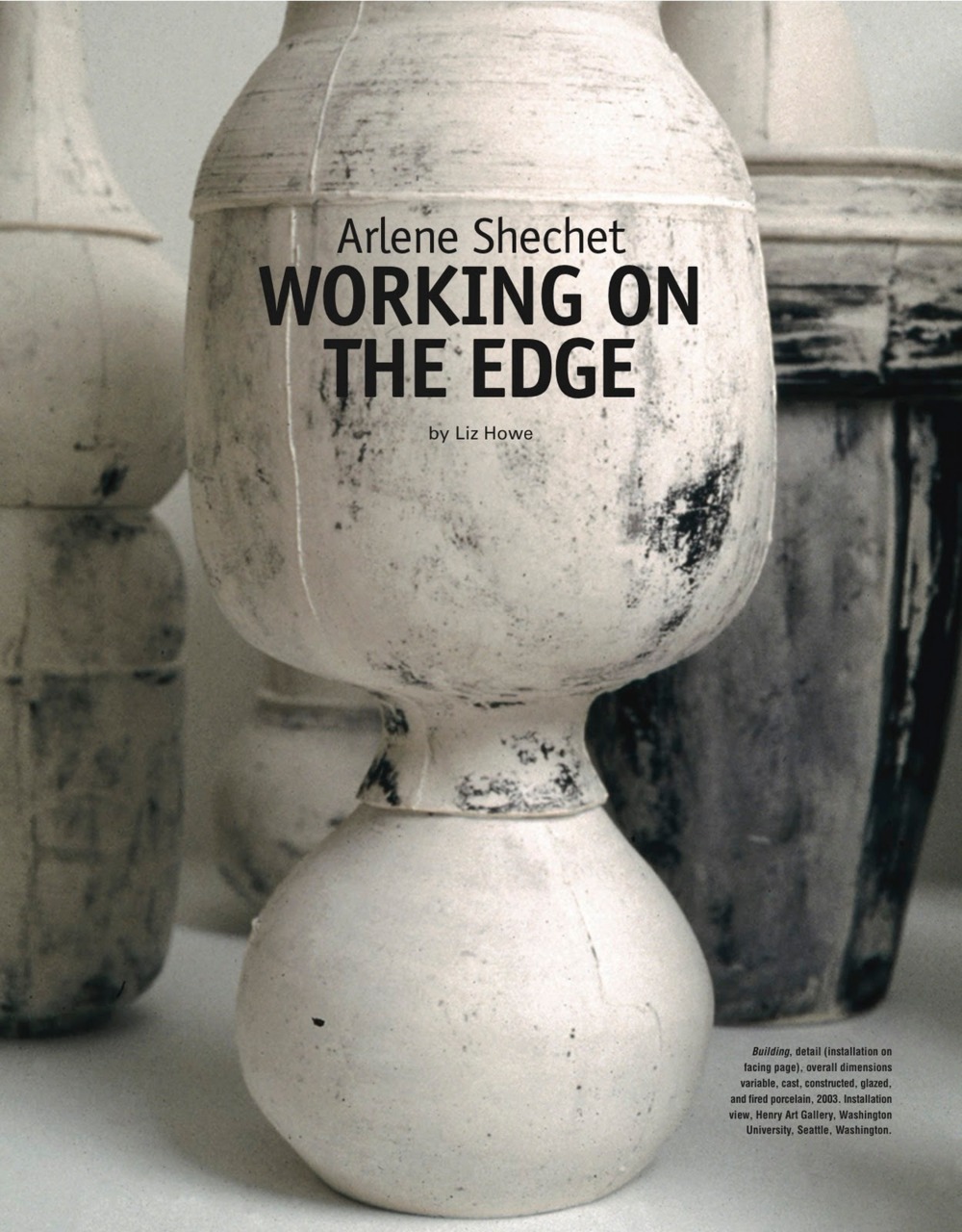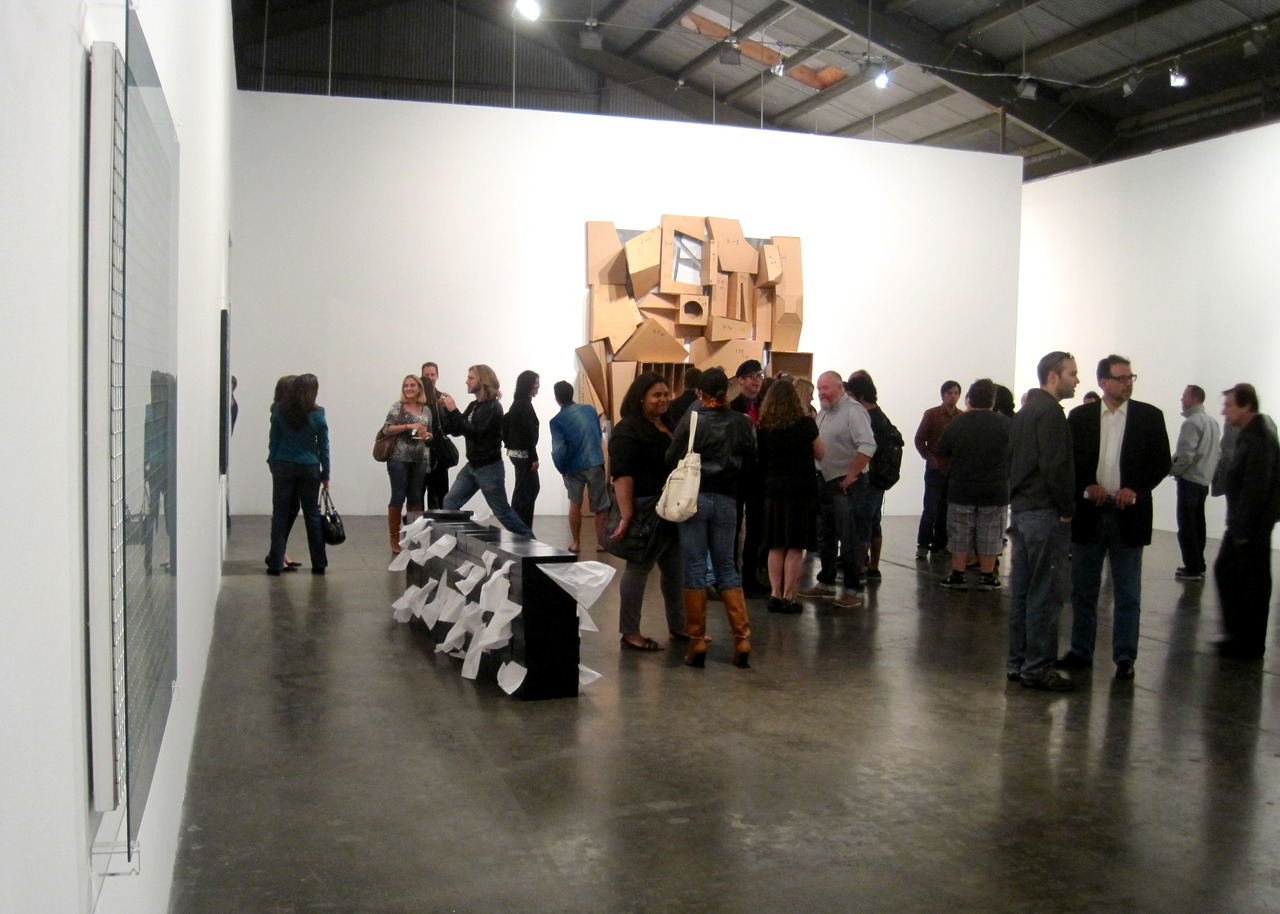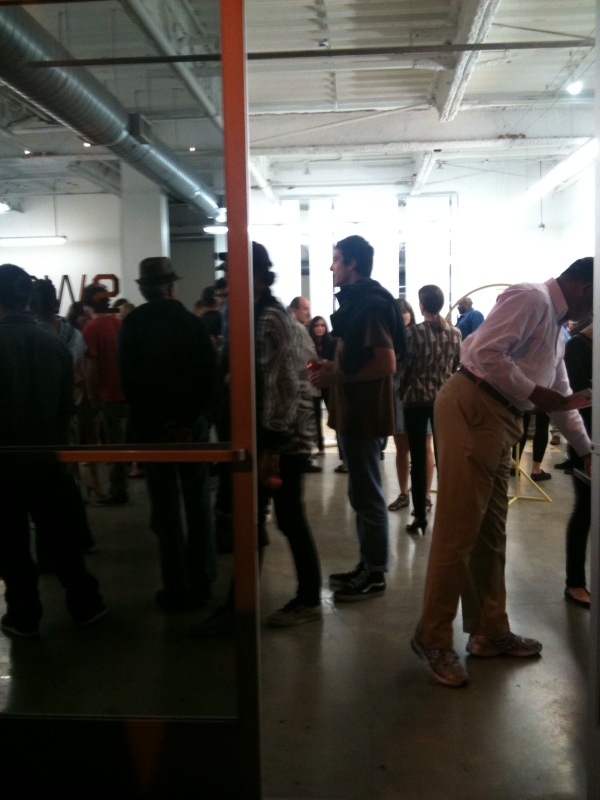CHIE FUEKI / ARTnews December 2010
The Great American (Male) Nude
Turning the tables on art-historical tradition, more women artists are depicting the naked male bodyby Lilly WeiIn thinking about women’s prospects in the arts over the past half century, I realize we’ve indeed come a long way from the stereotype of the active male artist and the passive female muse—men looking at women and women looking at themselves being looked at. Given women’s greater autonomy in general and in sexual matters in particular, it should be payback time, a chance for the woman artist’s gaze to linger on the naked male body as a source of esthetic delight and desire. Yet, “nude” remains virtually synonymous with the female body.
Instead of ratcheting up the male body count, female artists such as Lisa Yuskavage, Jenny Saville, Ghada Amer, Vanessa Beecroft, Marlene Dumas, and countless others have joined men in portraying women, whether themselves or others. Conversely, while recent decades have seen hard-core male sexuality and phalluses in greater evidence on gallery walls, more often than not these works are instances of men being depicted by other men, from Lucian Freud to David Hockney, Paul McCarthy, and Juergen Teller to, most notoriously, Robert Mapplethorpe.
So why are there so few stripped-down males, their charms unveiled by women for the delectation of women? While there is no one answer, some artists say that men’s bodies are less esthet ically pleasing; others suggest that women need to take back the female body, not colonize or promote those of men. Women—in fact most viewers—still have difficulty scrutinizing male genitalia, or, conversely, men resist being scrutinized by women as subjects. It might make them feel too vulnerable, and that raises a question: Does the mere fact of being depicted naked feminize the male body?
Yet even if their numbers remain small, more and more female artists are taking on the subject of the male body. In the years since feminist art began in the ’60s, and especially in the last decade, women have been exploring the possible meaning of a “female gaze,” with approaches that range from coy to ambiguous to explicitly sexual.
Looking at the work of younger women artists today, we find glimpses of naked body parts and even genitalia in Cecily Brown’s sexy abstractions, for example, but her imagery is more about hide-and-seek amid gorgeous brushwork than putting the male body center stage. And Elizabeth Peyton on occasion paints naked men, but her characteristically androgynous figures—whether unclothed or not—signal chaste longing more than carnal knowledge. Dana Schutz offers schematized, hardly erotic renditions of male beauté in Frank on a Rock (2002) and Presentation (2005), in which the subject is laid out as if for a dissection. A similar lack of sexual engagement affects Chie Fueki’s Super (2004), featuring a great, shimmering superhero caged in a transparent box with glitter obscuring the nudity.
Sexuality, and its connections to power and violence, comes to the fore in Kara Walker’s narrative silhouettes. Yet the dominance of the racial discourse overshadows the nakedness of white rapists and their black female victims, making it a lesser point. In Matterhorn (1995), Hilary Harkness, departing from her paintings of miniature militant women, depicts an enormous white cow with a strapped-on dildo mercilessly abusing a naked man. According to Harkness it’s a depiction of artist Mel Bochner, her former professor at Yale: the picture is every female student’s revenge fantasy. For all their diverse approaches and motivations, these works raise another question: Why does so much sublimation and unease surround these descriptions of the male body, once considered the ideal of beauty?
Ranking among the heavy hitters of earlier generations to tackle the male body, Alice Neel is notable for her unembarrassed presentation of the nude. She was praised for her unexpurgated, psychologically acute studies of friends, family, and acquaintances. Joe Gould (1933) presents a Greenwich Village eccentric sitting on a chair with legs spread and penis not only proudly on display, but in triplicate. Neel explained she gave him this “tier of penises” in tribute to his exaggerated virility. A later Neel nude, from 1972, portrays artist and critic John Perreault, awkwardly lolling on a bed, head propped up by his hand, fully exposed. His flaccid phallus, the focal point of the composition, is perhaps more unnerving.
Women artists have more directly tackled the art-historical notion of the male gaze, turning it on its head. Now in her mid-90s, Sylvia Sleigh has been undressing her male subjects for dec ades. The model in Philip Golub Reclining (1971) looks into a large mirror in which the artist at work is also reflected. It appears to be an amalgam of two Velázquez paintings: the Rokeby Venus, one of the most seductive nude female backs in the history of art, and his masterpiece Las Meninas, in which the artist is shown as he paints the scene before us. A more recent work, from 2006, portrays a nude young man sitting in an Eames chair clutching the armrests. The work, featured in P.S. 1’s “Greater New York” exhibition earlier this year, suggests a provocative interpretation of another Velázquez, his canny portrait of Pope Innocent X.
Working in a similar vein, Ellen Altfest is noted for her meticulously detailed, trompe l’oeil paintings of quirky subjects as well as her sly, subtly charged portraits of male nudes that parody the male gaze. Some she presents with eyes closed, arms behind their heads, legs apart, mimicking a classic female nude pose. Penis (2006), an anatomically correct, crisply drawn close-up of the body part, offers an upending of Gustave Courbet’s Origin of the World (1866), an unblinking look at the male phallus that is both real and theatrical, perversely clinical but with an undertone of heat, appealing to the voyeur—and exhibitionist—in all of us.
Other artists find more subtle ways to critique the objectifying gaze, to make pictures about sex that are not about power and subjugation. Joan Semmel is best known for her ongoing series of almost photorealistic nude self-portraits—a repossession of the female body from the male gaze and a meditation on time and its effects. But she has also depicted male nudes and, in the ’70s, created suites of paintings that show her lover and herself in various stages of sexual engagement. Because she didn’t want to objectify the male body in the way women’s bodies have been objectified, Semmel says, she chose to highlight situations in which pleasure was mutual, adding that “women are not as much aroused by the sight of the male body as they are by implications of touch, followed by sight.”
Among photographers, it seems evident that many women are simply not overtly fixated on the male body as a source of visual titillation. Diane Arbus’s photographs of the residents of a nudist colony include men, but their nakedness is incidental—vulnerability and marginality are the themes, rather than sexuality. And Nan Goldin’s naked men are part of a nervy, narcissistic autobiographical narrative of extreme urban bohemia. Sam Taylor-Wood’s photographs of naked men do qualify as male nudes, despite the hothouse glamour that envelops them, making them look less exposed. Katy Grannan, on the other hand, comes closer to naked than nude, sexuality being beside the point. In some of her color photos of men outdoors—including one shown with a full erection—Grannan reminds us that being naked in public is criminal.
Yet photography’s immediacy is also suited to work that is unequivocally about sex. “As a European who was raised in a Mediterranean culture, I’m quite comfortable with the human body,” says photographer Ariane Lopez-Huici, who divides her time between New York and Paris. “However, male nudity is still a difficult subject.” In 1992 she made “Solo Absolu” (1992), a series focused on the genitalia of a naked male in flagrante delicto, because she “thought male masturbation was a subject not often addressed.” In her recent show at the French Institute Alliance Française in New York, a film documenting her career was not shown, she said, to shield children from the sequence. “It was not meant to be shocking.” But evidently “it still is, in 2010.”
One of Aura Rosenberg’s series, “Head Shots,” also deals with masturbation but consists of black-and-white photos of men’s faces at the moment of orgasm. The artist, who lives in New York and Berlin, says a central element of her work is to represent “a larger picture of sexuality than just women’s bodies and women’s pleasures,” and it never occurred to her not to make images of nude men. Rosenberg said she wanted the images to be “edgy, ambiguous, to reference pornography and its conventions, but not be porn.” For that reason, in “Head Shots” (selections from it published as a book in 1996), she did not photograph the obvious but relied on the expression of the face to convey ecstasy, although whether that ecstasy is real or fake is deliberately left unclear.
New York–based artist Brenda Zlamany, who began painting portraits of men in 1991 and still focuses primarily on them, says she has been criticized for her preference. “The penis is the last sacred cow, the last taboo. People tend to get stuck on one thing with male nudes—the penis—and they can’t get beyond it,” she says. “I made a full-length portrait of artist Leonardo Drew in the nude and I’ve never been able to show it. It’s too confrontational, too explosive. I have been told by certain galleries and collectors that no one really wants male nudes, but I think there are more of them around than we know about.”
Whatever the reasons, the Great American Nude, Male Edition, has yet to become an art-world staple. But if Zlamany is right, women artists need to drag the paintings of naked men out of their studios. Then maybe the next generation will feel less reticent taking up their brushes and cameras as a naked man strikes a pose. It could be revolutionary.
Lilly Wei is a New York–based art critic and independent curator.































